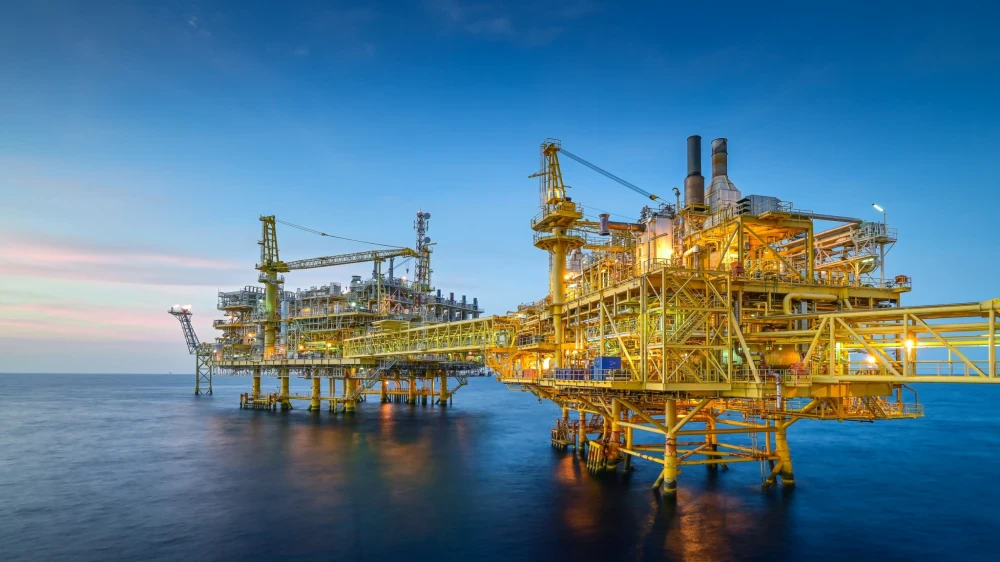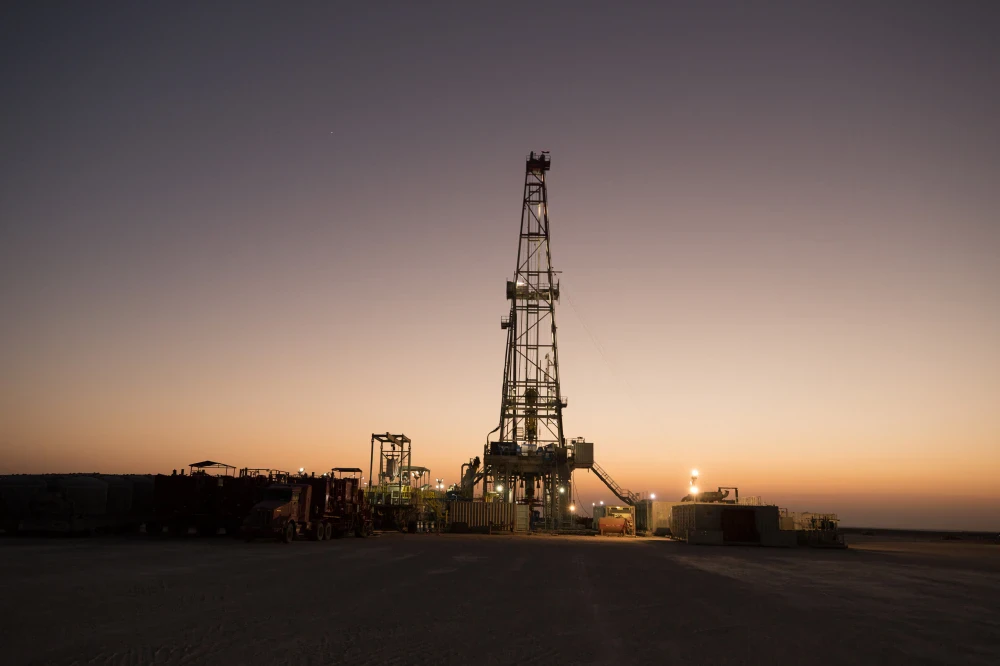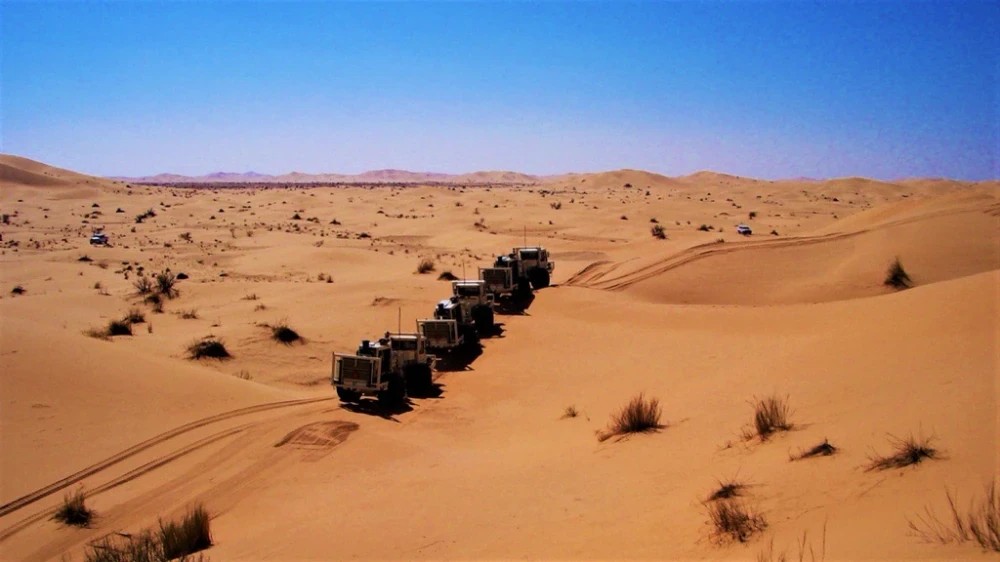
Special Feature
"The Power of Power" 40 Years of PTTEP: Energy for the Nation and the Thai Populace
Energy is an indispensable part of life—essential for electricity generation, driving the economy, and enabling national development across various sectors. But where does Thailand’s energy come from, especially petroleum? And how did the journey toward energy self-reliance begin?
Thailand’s journey in domestic petroleum production began over a century ago when crude oil was first discovered seeping to the surface in Fang district, Chiang Mai, in 1918. This sparked hope for the presence of petroleum resources both crude oil and natural gas within the country.
Although untapped petroleum resources lay beneath Thailand’s subsurface, turning that potential into reality was no simple task. At the time, petroleum exploration was still unfamiliar territory for the country, and Thailand faced major limitations in technology, capital and expertise to explore and produce on its own. To unlock its energy potential, Thailand had to open bidding for petroleum concessions—both onshore and in the Gulf of Thailand—to international oil and gas companies, while assuming the role of a purchaser of the crude oil and natural gas produced, in order to utilize them for the country's development."
Thai Energy Pioneers for Thailand’s Energy Independence
Driven by the vision of the government and the dedication of many visionary leaders 40 years ago, Thailand took a crucial step toward energy self-reliance. It was recognised that achieving greater energy independence was essential for ensuring national energy security. This vision led to the establishment of PTT Exploration and Production Public Company Limited (PTTEP) (its current name) in 1985. The company was originally a unit under PTT, now operating independently, with the mission to explore, develop, and produce petroleum resources. PTTEP’s first mission was to co-invest in Block S1, also known as the Sirikit Oil Field in Phitsanulok Province, alongside Thai Shell, an affiliate of Shell, which had already made a commercial oil discovery. This marked the beginning of PTTEP’s role to participate in managing the country’s petroleum resources.
PTTEP then expanded its reach by partnering with several international oil companies in various petroleum concessions, including the E5 project in the Northeast, the Unocal 3 project, and B5/27 project in the Gulf of Thailand. The company also took on the role of operator for a small-scale oil field under the PTTEP 1 project in Suphan Buri Province. These projects became important learning grounds, allowing PTTEP to build valuable operational experience.One of PTTEP’s most strategic aspirations was to become the operator of the Bongkot field, Thailand’s major natural gas source. Securing this role was seen as a pivotal step in strengthening the country’s path toward energy self-reliance and long-term energy security.
In 1988, the government resolved to authorize PTTEP to buy back the concession rights of the Bongkot field from Texas Pacific and assigned PTTEP the mission to operate the Bongkot field independently. At the time, PTTEP had limited experience in petroleum exploration and development, making this a significant challenge the company had to overcome. The urgent priority was to develop its workforce, rapidly build expertise in E&P, and prepare to assume operatorship from Total—now known as TotalEnergies SE—a French multinational energy company that had originally been selected as both a joint venture partner and the operator of the Bongkot field.
A key condition in selecting Total as a joint venture partner was the requirement to transfer operatorship of the Bongkot field to PTTEP within five years from the start of gas production in 1993.
To achieve this goal, all PTTEP personnel designated to take over key roles from Total underwent intensive training—gaining knowledge and hands-on experience across all areas, from exploration, development, production and support functions. Their “classrooms” were not limited to the Bongkot production platform, but extended across Total’s petroleum sites around the world, including France, Indonesia, Nigeria, Yemen, Gabon, the United Arab Emirates, Scotland, and more. Each location presented unique challenges—from terrain and climate to culture, language, living conditions, and work styles. PTTEP personnel were expected to absorb as much knowledge and experience as possible from every assignment, equipping themselves to meet the responsibility that lay ahead.
The operation of Bongkot field eventually returned to the hands of the Thai company. In 1998, PTTEP successfully assumed operatorship of the field, proving that a Thai company could independently manage petroleum exploration and production with efficiency on par with international oil companies. This marked the beginning of Thailand’s journey toward energy self-reliance.
While PTTEP was building its technical capabilities, financial preparedness was equally critical, especially in the capital-intensive energy industry. To reduce reliance on government funding and support expansion for long-term growth, a policy was introduced for PTTEP to list on the Stock Exchange of Thailand (SET) in 1993. This enabled the company to raise capital from the private sector and public investors, fuelling expansion both domestically and abroad. It also broadened opportunities for petroleum exploration and helped generate revenue to return to the country.
Every Obstacle, Every Challenge – The Foundation of Our Strength
After overcoming the demanding task of building and nurturing a capable team to become the operator, PTTEP faced numerous other challenges that continued to shape its strength and resilience. One of the most difficult came during the oil price collapse of 2015-2016, when crude oil prices fell to around USD 30 per barrel, well below production cost. Many global oil companies were forced to shut down, sell off assets, or lay off employees, triggering a broader economic downturn. PTTEP responded with a major transformation, including restructuring the organisation, adjusting operational plans, and cutting non-essential costs in order to preserve both the company and its people during this challenging period.
This period underscored PTTEP’s prudent leadership, adaptability, and strategic foresight – knowing when to push forward and when to step back. These qualities allowed the company to weather the storm and continue serving as a pillar of Thailand’s energy security.
Another major challenge that reaffirmed PTT Exploration and Production Public Company Limited (PTTEP)’s role in strengthening Thailand’s energy security occurred when the Erawan field in the Gulf of Thailand reached the end of its concession period. The government opened a new bidding round under the Production Sharing Contract (PSC) fiscal regime, designating the field as Block G1/61. PTTEP won the bid and was slated to take over as the operator from the previous concessionaire in April 2022.
At the time PTTEP assumed operatorship of the Erawan field, gas production had already declined to approximately 370 million standard cubic feet per day (MMSCFD), which is well below the new contractual requirement of 800 MMSCFD. This existing shortfall required Thailand to import liquefied natural gas (LNG) to compensate for the reduced supply—during a period when LNG prices were soaring—inevitably raising electricity costs.
PTTEP had to accelerate efforts to ramp up gas production at the Erawan field to the contracted level of 800 MMSCFD as quickly as possible in a bid to reduce LNG imports. This was an intensely challenging period as boosting output to that extent required immense resources, and expedited processes across all phases of work. Through dedicated efforts, PTTEP succeeded in increasing gas production to the required level by 2024, helping to ease energy cost pressures and reinforcing Thailand’s energy security.
The Greater Value of Natural Gas
Natural gas from the Gulf of Thailand is not only the country’s primary source of fuel for electricity generation and a driver of economic sectors such as manufacturing, transport, telecommunications, technology, and daily life—but it also contains components that serves as a vital feedstock for the petrochemical industry. This enables the development of downstream industries, creates employment opportunities, supports livelihoods, and generate additional income for the country.
The petroleum industry is also one of the state’s top revenue generators—contributing via royalties, petroleum income tax, profit-sharing under Production Sharing Contract (PSC), special remuneration benefits, earnings from the Malaysia-Thailand Joint Development Area (JDA), and other streams. These funds are used to support national development in areas such as infrastructure, education, healthcare, and community development. Since its establishment through to 2024, PTTEP has contributed over 891 billion baht in such revenues to the Thai government.
40 Years of “The Power of Power”: Our Energy for the Nation and Thai Populace
Over the past four decades, PTTEP has grown from a single domestic player into a multinational presence with over 50 projects in 12 countries, including Malaysia, Myanmar, the United Arab Emirates (UAE), Oman, Algeria, and Mozambique. In its first year, PTTEP’s petroleum production was around 5,000 barrels per day—based on its share from the S1 project with Thai Shell. Today, the company’s total petroleum production stands at approximately 700,000 barrels of oil equivalent per day, from both domestic and international operations.
Of the natural gas produced in Thailand, 82% comes from PTTEP’s operations—primarily from the Erawan field (Block G1/61), Bongkot field (Block G2/61), and Arthit field, all located in the Gulf of Thailand. These are core energy sources that power the nation’s economy, fuelling industries, transportation, telecommunications, technology development, healthcare, education, and everyday life for Thai people.
Serving as the operator of such essential gas fields—often regarded as the powerhouses of the country—is a point of great pride for PTTEP. It reflects the company’s enduring mission to ensure energy security for Thailand, a vision that has guided PTTEP since its founding 40 years ago.
Looking forward, PTTEP remains committed to strengthening national energy security while advancing toward cleaner energy. One of its key initiatives is Carbon Capture and Storage (CCS), a technology designed to capture carbon emissions from gas production. Meanwhile, the company is exploring new energy technologies to support a more sustainable future. PTTEP also aims to expand green areas through the reforestation of over 200,000 rai of terrestrial and mangrove forests.
PTTEP also carries out a wide range of social and environmental programs. One notable example is the “Ocean for Life” initiative, which aims to restore marine ecosystems, generate income, and improve the quality of life for communities in 17 coastal provinces surrounding the Gulf of Thailand. Other efforts support basic needs, education, environment conservation, and cultural preservation—ensuring the well-being and growth of communities near its operational areas.
A period of 40 years may not seem long in the grand timeline of the global energy industry. However, for Thailand, the ability to explore and produce petroleum independently and to be self-reliant in energy stands as a defining moment in the nation’s energy history. This era of brilliance saw the discovery of natural gas fields used to generate electricity, reducing dependence on energy imports and laying a solid foundation for economic and social development.
PTTEP’s mission can thus be seen as ‘The power of power’ that drives the country forward and empowers every Thai in their daily lives, in carrying out their responsibilities, and in pursuing their goals. In turn, this collective energy has become a power force that inspires PTTEP to never cease its steadfast and strong commitment to exploring energy resources with strength, purpose, and determination.







